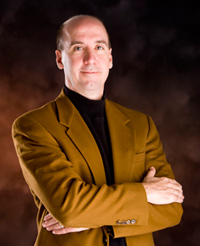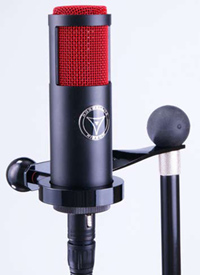 When did you first meet Kevlar? Think carefully, your answer may betray a lot about your past.
When did you first meet Kevlar? Think carefully, your answer may betray a lot about your past.
If it was sometime around 1976, you were either enjoying the finer points of cutting-edge reference loudspeaker performance or reading spec sheets in the hope that you soon would be. If you were five years ahead of the audio boys, you were more likely risking your life for country or cash.
Sometime around 1992 I called on loudspeaker designer Roger Quested for a Studio Sound story. In an entertaining couple of hours I learned a lot about the speaker designer’s problems and mindset. I also pushed to gain a real insight into what radically new form future loudspeakers might take. Materials technology, I was told. Without some truly astounding breakthrough in physics, it was all down to developments in materials technology.
Kevlar was one such development.
Rather like the glue used for Post-it notes, the raw constituent of Kevlar was initially overlooked by its creator. Where Dr Spencer Silver struggled to convince 3M of the commercial value of an adhesive that didn’t stick all that well, it took Polish-American chemist Stephanie Kwolec to convince DuPont that they should stop discarding a cloudy by-product and investigate its astonishing strength.
The result was Kevlar – poly-paraphenylene terephthalamide, if you prefer – and it was key in establishing polymer chemistry as a field of research. Neatly referenced by Hannibal Lecter manhunter Will Graham, in the 1981 novel that brought Hannibal the Cannibal to the big screen, Kevlar was used to stop bullets that make it as far as your shirt front.
Graham: Kevlar Second Chance
Spurgen: I hope you have a second chance...
Bullet-proof vests moved on in 1998, when Second Chance introduced Zylon-based body armour as a lightweight alternative to Kevlar. But some 35 years after it first appeared in B&W’s DM6, Kevlar remains a pretty good material for a loudspeaker cone. It even turns up in drum heads, Japanese archers’ bow strings and paraglider rigging… Strong stuff.
Elemental physics
Unlike Kevlar, neodymium is an element – a rare earth element (Nd) at that. And for its part, neodymium has also made a big impression on loudspeaker performance. This time it’s the motor behind the cone that’s working materials science.
Wikipedia honours Nd as responsible for ‘the most magnetic permanent magnets known thus far’. Not bad for fridge magnet technology. Its strong magnetic characteristic and low weight make neodymium a gimme for mics, in-ear headphones and computer hard disks too.
In fact, neodymium has a history that very neatly illustrates the broader power of materials development – among a wide variety of applications, early neodymium compounds found commercial use as glass dyes and it is still an important element in the manufacture of certain lasers.

Among them was nanotech investor, author and ‘futurist’ Jack Uldrich. A seasoned member of the ‘talk circuit’ Uldrich mixed background, history, applications and possibilities into a spicy cocktail. He wasn’t completely keyed in to pro audio but was still able to pick a good number of likely applications – including both mics and loudspeakers.
A few years later, in 2009, Shure acquired US microphone company Crowley & Tripp. With its small but highly regarded catalogue of boutique ribbon mics came something new – the material used for their diaphragms, Roswellite.
I ran into Bob Crowley when he showed the first fruits of Roswellite at a New York AES show in 2007. He’s a smart man with an adirable track record in medical equipment development, and who describes himself as an ‘entrepreneur, futurist and bon vivant’. It was hard to tell who was more bemused – a bunch of audio geeks trying to understand the implications of a new material or the man explaining it. I cut to the chase…
‘What’s a smart man like you doing in a place like this?’ I asked. ‘It’s fun,’ he replied.
Material gains
‘We looked around and saw the big changes that had happened in audio recording and realised that in all types of microphones, and in particular, ribbon microphones, progress had virtually stopped,’ he told me. ‘Condenser technology itself, which is very old indeed, has been so worked over that few fundamental differences exist from brand to brand.’
Enter Roswellite. Acoustic nanofilm.
‘Acoustic nanofilm sounded too serious to me,’ Crowley says. ‘I liked the term Roswellite but was afraid it was a little wacky sounding. My wife works in aerospace and knows about sun-angle-sensors for satellites, but not as much about earth-based microphones. I asked her, “If I told you something was made of Roswellite, what would you imagine it is?” Her quick response: “Something that is super light, tough and metallic”.’
Roswellite is ‘an extremely strong, low-mass, superelastic, paramagnetic composite with high inherent conductivity and shape memory properties’. Due to these qualities, it is reckoned to be immune to damage from windblast, plosives, phantom power and high SPLs.

Along with the initial el Diablo and Naked Eye C&T mics, Roswellite is now used in Shure’s KSM300 series mics. And, obviously, the original C&T models now command 'geek' status.
Down at the sharp end of physics, the search for subatomic particles has a particularly acute need for magnets. These are way beyond the scope of fridges and loudspeakers, needing to be cooled within sight of absolute zero to play their part in atom smashing. Expensive and cutting-edge, they may be, but this pioneering use of materials technology paved the way for medical magnetic resonance imaging machines and the multi-million dollar-a-year industry they represent. And isn’t the stuff of non-stick kitchenware a spin-off from the space programme?
Materials technology is not the only way forward, of course. If the impact of switch-mode power supplies on amplifiers isn’t proof enough of technical advance then surely digital audio itself is. Nevertheless, materials technology demands a watchful eye – both from those who develop equipment and those who use it.
Last/Next Blog





